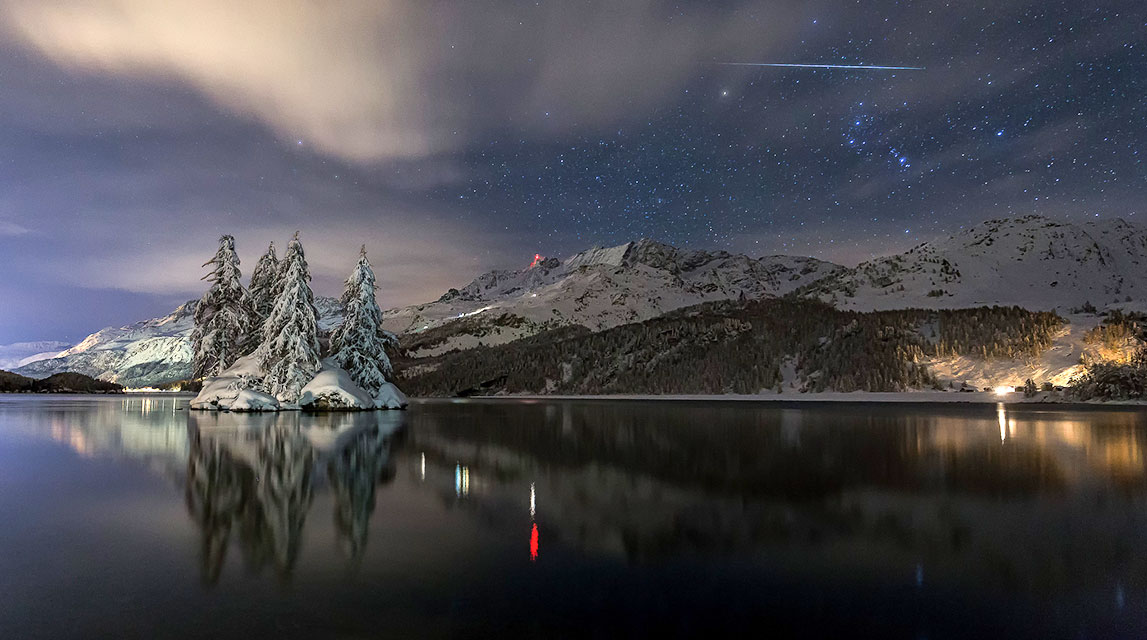
The 29th International Meteor Organization Meteor Shower Calendar is available!
The main intention of the annual International Meteor Organization Meteor Shower Calendar is to draw the attention of observers to regularly returning meteor showers as well as to provide information about events which may be possible according to model calculations. This includes both the possibility of extra meteor activity in terms of additional peaks and/or enhanced rates but also the observational evidence of no rate or density enhancement. Both may help to improve our knowledge about the numerous effects and interactions between meteoroid parent objects and the streams. Further, the Calendar hopefully continues to be a useful tool to plan your meteor observing activities.
2019 Highlights
- The new Moon on January 6th creates optimum viewing conditions for the expected Quandrantid meteor shower (QUA) maximum on January 4th 02h20m UT – λ⊙ 283 . ◦16, expected ZHR = 120 (can vary ≈ 60–200). The 02h UT timing for the peak will be favourable for European longitudes. The λ⊙ = 283 . ◦16 maximum timing is based on the best-observed return of the shower ever analysed, from IMO data collected in 1992, as confirmed by radio results in most years since 1996. It also coincides with the closest approach to the stream calculated by Jérémie Vaubaillon (λ⊙ = 283 . ◦17).
- Seen the small activity mainly found in radio data close to the positions expected to Mikiya Sato’s previous calculations in 2016 and 2017, observers are advised to monitor the α-Monocerotids (AMO) annually. The brevity of all past outbursts means breaks under clear skies should be kept to a minimum near the predicted peak (November 22th, 06h UT – λ⊙ = 239 . ◦32, expected ZHR is variable, usually ≈ 5, but has produced an outburst up to ≈ 400).
- Only one impressive Phoenicids (PHO) return has been reported, that of its discovery in 1956, when the peak ZHR probably reached ≈ 100. Recent significant activity was observed on 2014 December 1. This was predicted by Sato and Watanabe (2010). In the same paper, several encounters with dust trails are calculated for the 2019 return. The estimated ZHR may reach 12 on December 2nd, 19h UT – λ⊙ = 250 .◦0;
The heart of the Calendar is the IMO Working List of Visual Meteor Showers which is continuously updated so that it is the single most accurate listing available anywhere today for visual meteor observing. Nevertheless, it is a Working List which is subject to further modifications, based on the best data we had at the time the Calendar was written. Observers should always check for later changes noted in the IMO’s journal WGN or on the IMO website. Vice versa, we are always interested to receive information whenever you find any anomalies! To allow for better correlation with other meteor shower data sources, we give the complete shower designation including the codes taken from IAU’s Meteor Data Center listings.




 You saw something bright and fast? Like a huge shooting star? Report it: it may be a fireball.
You saw something bright and fast? Like a huge shooting star? Report it: it may be a fireball.  You counted meteors last night? Share your results with us!
You counted meteors last night? Share your results with us!  You took a photo of a meteor or fireball? You have a screenshot of your cam? Share it with us!
You took a photo of a meteor or fireball? You have a screenshot of your cam? Share it with us!  You caught a meteor or fireball on video? Share your video with us!
You caught a meteor or fireball on video? Share your video with us!